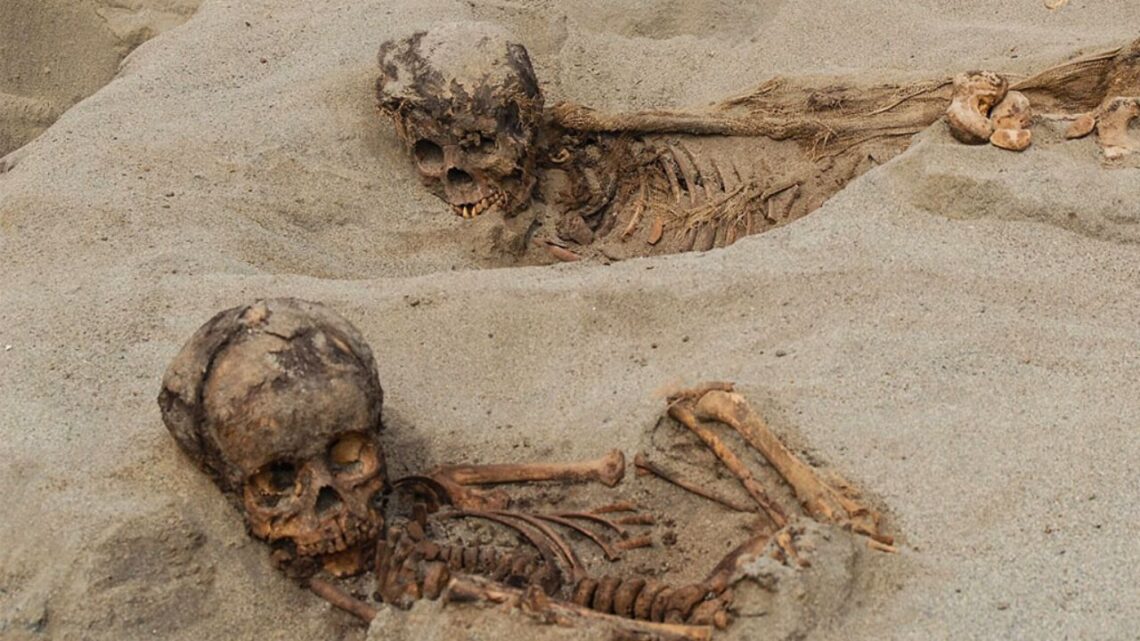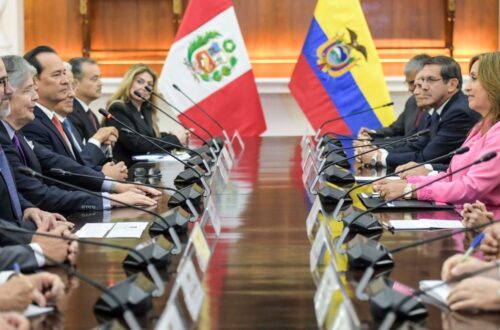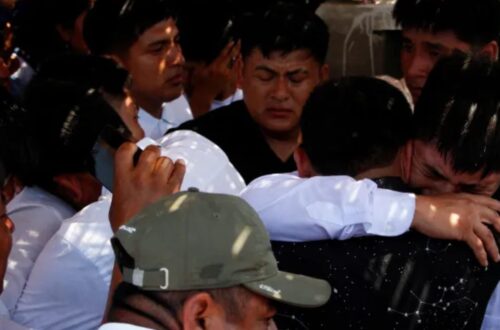On the north coast of Peru, a shocking discovery revealed a dark moment from ancient history. Archaeologists found the remains of more than 140 children and over 200 young animals buried together.
This massive ritual, done nearly 600 years ago, was meant to appease the gods during a time of bad weather and failed crops. The site, called Huanchaquito-Las Llamas, offers a sad but powerful look into how ancient people faced disasters they could not control.
The Discovery At Huanchaquito-Las Llamas
The site lies near the old capital of the Chimú Empire, a powerful coastal civilization that existed before the Inca. Scientists from Peru and Tulane University found the graves under layers of sand and hardened mud.
What makes this discovery unique is that all the bodies were buried in the same layer, meaning the sacrifice happened at one single time, not over many years.
Why The Sacrifice Happened
Around the year AD 1450, a strong El Niño weather event brought heavy rains and floods to this usually dry area. Canals broke, fields were destroyed, and crops failed.
The Chimú people believed the gods who controlled nature were angry. To calm them and bring back good harvests, they performed this huge sacrifice involving children and young llamas or alpacas.
Who Were The Children And Animals
Experts studying the bones discovered that most of the children were between 8 and 14 years old. Both boys and girls were part of the ceremony. The shape of their skulls showed they came from different parts of the Chimú Empire, not just one town.
The animals buried with them were very young, usually less than 9 months old, and their wool colors ranged from light beige to dark brown. This shows the Chimú chose them carefully, perhaps to represent different parts of their empire.
What Scientists Found
Bones from the children’s chests showed clean cuts made by sharp tools, suggesting their hearts were removed during the ritual. The same kind of marks appeared on the animals, showing that trained people performed the sacrifice in a careful and organized way.
Nearby, archaeologists also found ceramic jars and wooden paddles that were likely used to prepare chicha, a kind of maize beer used in religious ceremonies. This shows that the ritual was planned, with food, drink, and prayers before the sacrifices took place.
| Detail | Meaning |
|---|---|
| Total children found | More than 140 |
| Total animals found | Over 200 young camelids |
| Year of sacrifice | Around AD 1450 |
| Cause | Floods and crop failure (El Niño) |
| Age of children | 8–14 years |
| Origin | Different regions of the Chimú Empire |
| Reason | To please gods for rain and harvest |
| Location | Huanchaquito-Las Llamas, Peru |
Lessons From The Past
The Chimú rulers built their power through irrigation and farming in a dry desert land. When natural disasters destroyed those systems, people feared that the gods had turned against them. The leaders may have ordered this sacrifice to restore order and peace, showing that they were still in control.
The footprints, bones, and broken jars found at the site tell the story of that tragic event — a desperate act made when everything seemed lost.
The discovery at Huanchaquito-Las Llamas is the largest known child sacrifice in the Americas. More than 140 children and 200 animals were offered to the gods during a time of crisis.
Scientists believe this event shows how powerful leaders tried to save their world using rituals when they could not control nature.
These remains remind us how far people will go when faced with fear, faith, and survival. Even after 600 years, the ground still holds the story of those children and the desperate hope of an ancient civilization.









